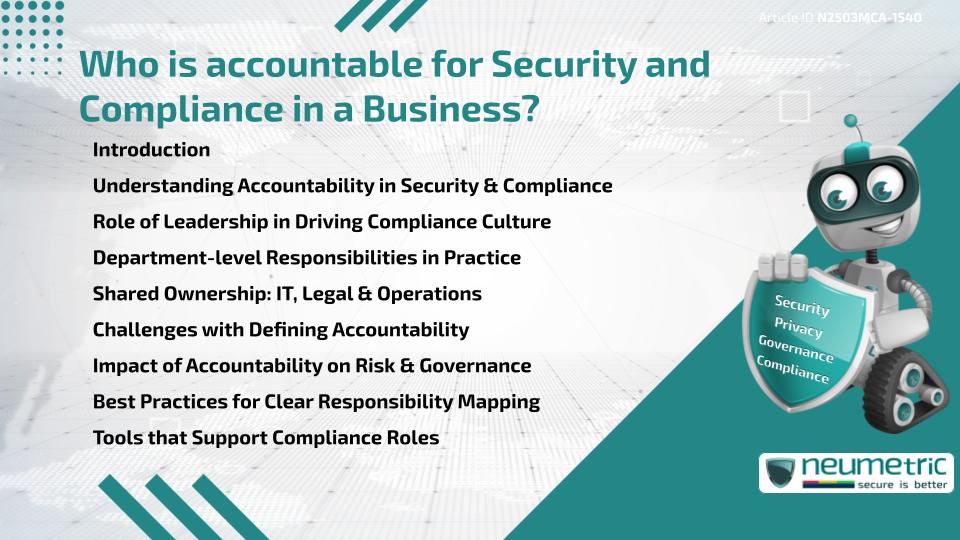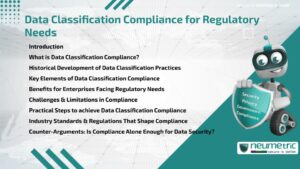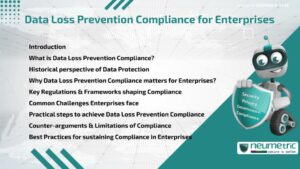Table of Contents
ToggleIntroduction
In any Business, Security & Compliance are no longer optional. As Cyber Threats grow & Regulations tighten, every Company must know one critical thing—Who is Accountable for Security and Compliance?
The answer is not always simple. Some believe it’s the IT Team, others point to the Chief Information Security Officer [CISO], while some think it should rest with Leadership. Let us explore How Accountability works in Real-world Settings & What makes it effective.
Understanding Accountability in Security and Compliance
At its core, Accountability is about taking Ownership of outcomes. In Business, this means someone must ensure the Company protects its Data, follows Regulations & Responds to Risks.
So, Who is Accountable for Security and Compliance? The honest answer: it depends on the Organisation’s size, structure & culture. Still, certain Roles & Departments often share this load.
Role of Leadership in Driving Compliance Culture
The Board & Executive Team set the tone. They may not handle Day-to-day Compliance, but they shape the Business’s approach. When Leadership actively supports CyberSecurity & Compliance initiatives, Teams follow through.
Executives must approve Policies, Allocate Budgets & Ensure Key Roles like the CISO or DPO have the Authority to Act. Without Leadership Commitment, even the best Policies can fall flat.
Department-level Responsibilities in Practice
If we ask Who is Accountable for Security and Compliance in daily Operations, Department Managers play a vital Role. HR must handle Employee access rights. Finance must ensure Secure Payment Systems. Marketing must follow Privacy Rules when handling Customer Data.
Each Department touches Sensitive Information in some form. This makes Compliance a shared responsibility, though guided by overarching Governance.
Shared Ownership: IT, Legal & Operations
While many look to IT for Security Controls, the Legal Team ensures Policies follow Law. Operations keep processes running safely & efficiently.
So again, Who is Accountable for Security and Compliance? It’s a combination of Cross-functional collaboration supported by Central oversight. The key is defining Roles clearly to prevent gaps.
Challenges with Defining Accountability
Many Businesses struggle with unclear roles. Employees often ask, “Is this my job?” If no one is clearly Accountable, issues fall through the cracks.
Another Challenge is assigning blame versus Ownership. True Accountability means being responsible for Results—not just Actions. This shift requires a Mindset change from all involved.
Impact of Accountability on Risk & Governance
When a Business defines Who is Accountable for Security and Compliance, it reduces confusion & strengthens Risk Management. Proper Accountability leads to quicker decisions, clearer communication & stronger Audit results.
Good Governance thrives on Accountability. It ensures processes are not just Documented but followed in Practice.
Best Practices for Clear Responsibility Mapping
Here’s how Organisations can improve clarity:
- Create a Responsibility Matrix like [RACI] to define Who does What.
- Appoint specific Roles such as a CISO or DPO for Central Accountability.
- Train all Staff on their Individual responsibilities.
- Review Roles regularly during Business Changes or Audits.
Clear Communication around these Roles is essential.
Tools that Support Compliance Roles
Modern Tools help Define, Assign & Track Compliance Tasks. Dashboards, Ticketing Systems & Automation Platforms can Alert Users, Log Actions & Show progress.
Choosing the right Tools won’t answer Who is Accountable for Security and Compliance, but they can support those who are.
Takeaways
- Accountability must start from leadership & extend to every Department.
- Defining Who is Accountable for Security and Compliance avoids confusion & strengthens Governance.
- Shared responsibility, backed by the right Tools, creates a Secure & Compliant Culture.
- Clear Role Mapping helps all Employees understand their part in Compliance.
FAQ
What does it mean to be Accountable for Security and Compliance?
It means being responsible for ensuring Rules are Followed & Risks are managed within your area or role.
Can Multiple People be Accountable for Security and Compliance?
Yes, different Teams may be Accountable for different parts. Clarity & Communication are Key.
Is the CISO always the one Accountable for Security and Compliance?
The CISO usually leads efforts, but real Accountability also lies with Leadership & Department Heads.
How can Businesses clarify who is Accountable for Security and Compliance?
Use clear Job Descriptions, Assign roles in a [RACI] Chart & Regularly Communicate expectations.
What if No one is clearly Accountable for Security and Compliance?
This can lead to missed Risks or Non-compliance. Every Business must assign & document responsibility.
Does Accountability mean Legal liability?
Not always. Legal liability may depend on the situation. Accountability is more about Ownership of process & outcome.
Are Compliance Tools enough to assign Accountability?
Tools support the process but can’t replace Human responsibility & Decision-making.
What Role does the Legal Team play in Accountability?
Legal Teams help interpret Laws & Guide Policy, playing a key role in ensuring the Company meets Legal Standards.
How often should Accountability be Reviewed?
At least Annually or whenever there’s a major Business or Regulatory change.
Need help?
Neumetric provides organisations the necessary help to achieve their CyberSecurity, Compliance, Governance, Privacy, Certifications & Pentesting goals.
Organisations & Businesses, specifically those which provide SaaS & AI Solutions, usually need a CyberSecurity Partner for meeting & maintaining the ongoing Security & Privacy needs & requirements of their Clients & Customers.
SOC 2, ISO 27001, ISO 42001, NIST, HIPAA, HECVAT, EU GDPR are some of the Frameworks that are served by Fusion – a centralised, automated, AI-enabled SaaS Solution created & managed by Neumetric.
Reach out to us!





